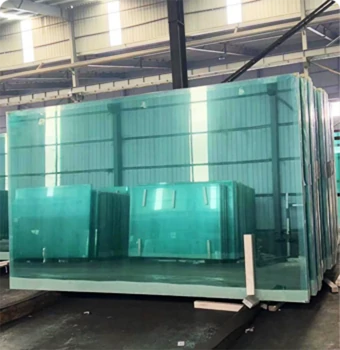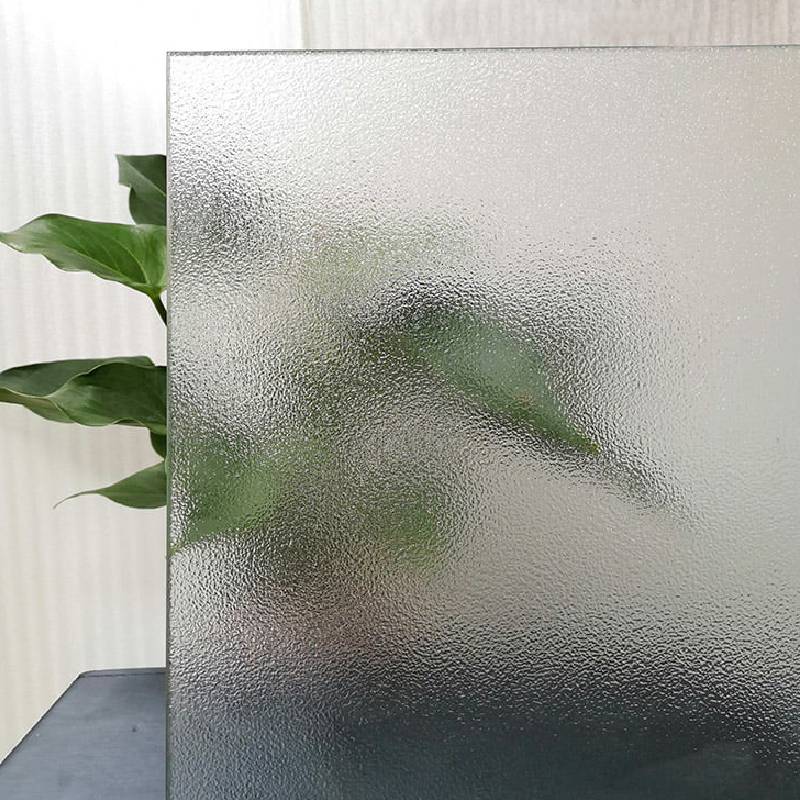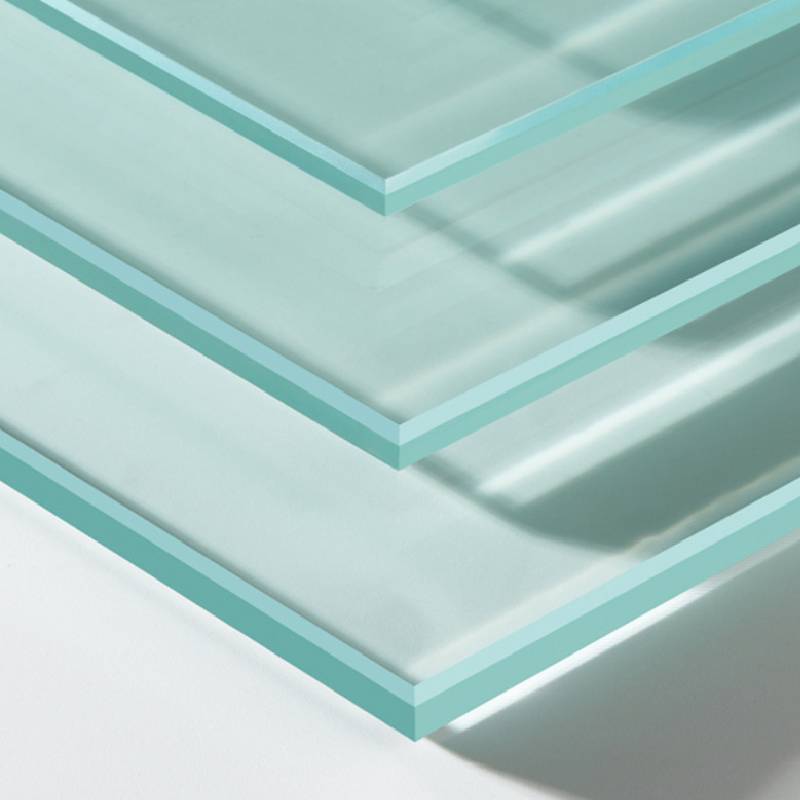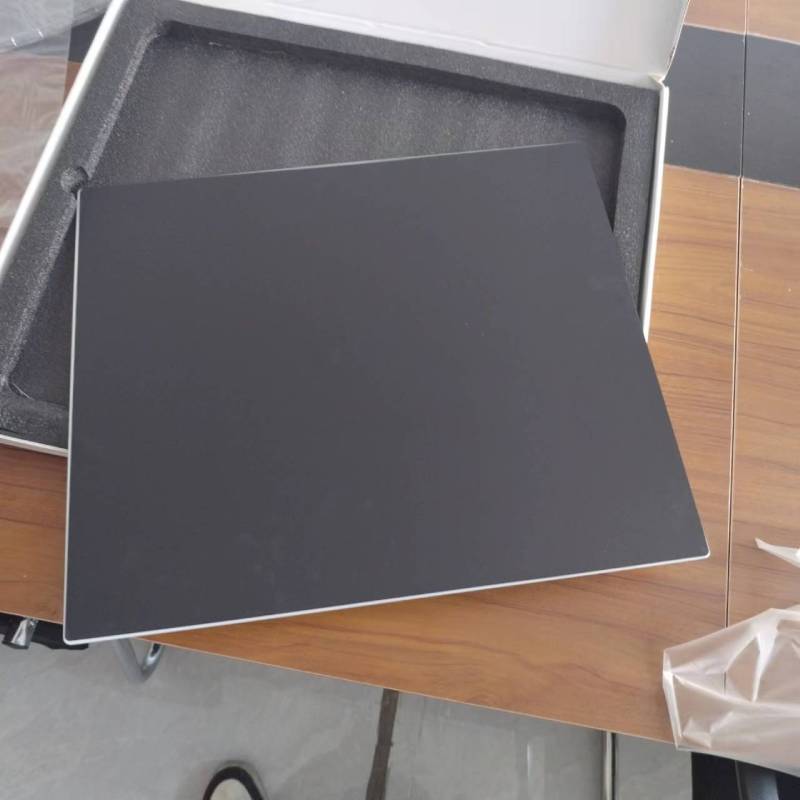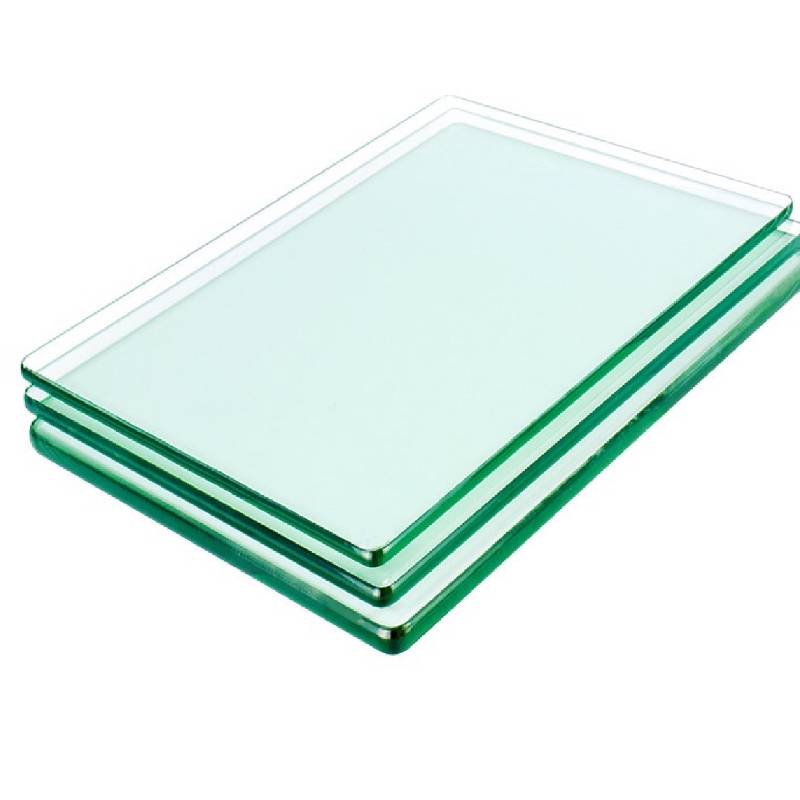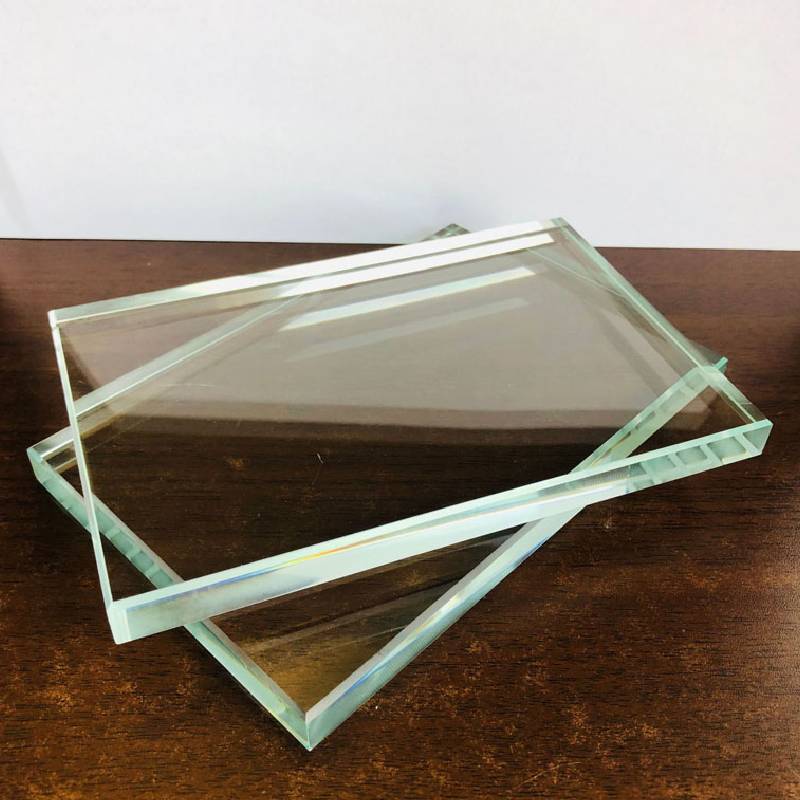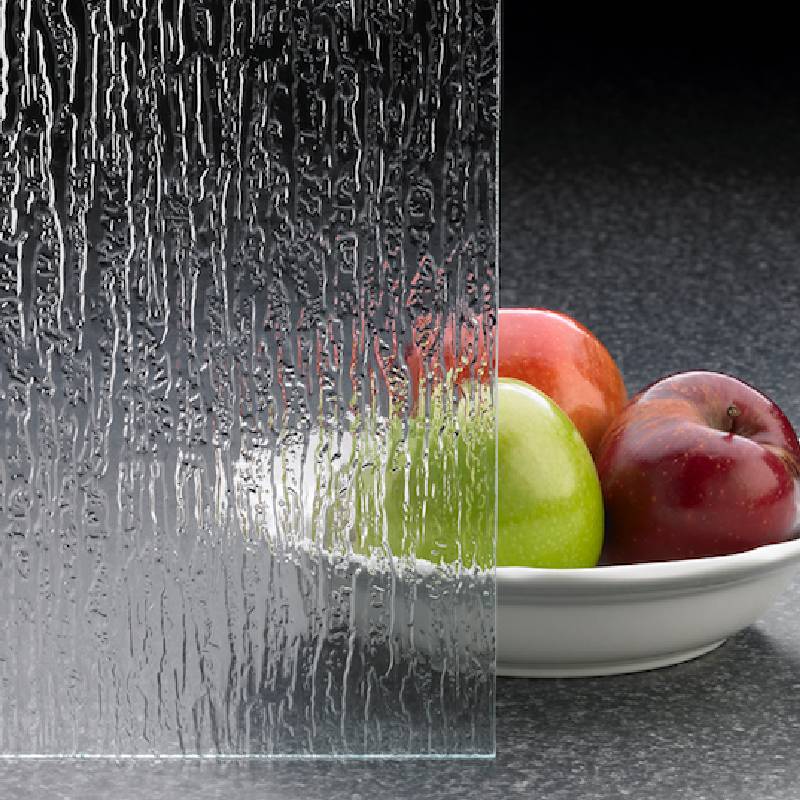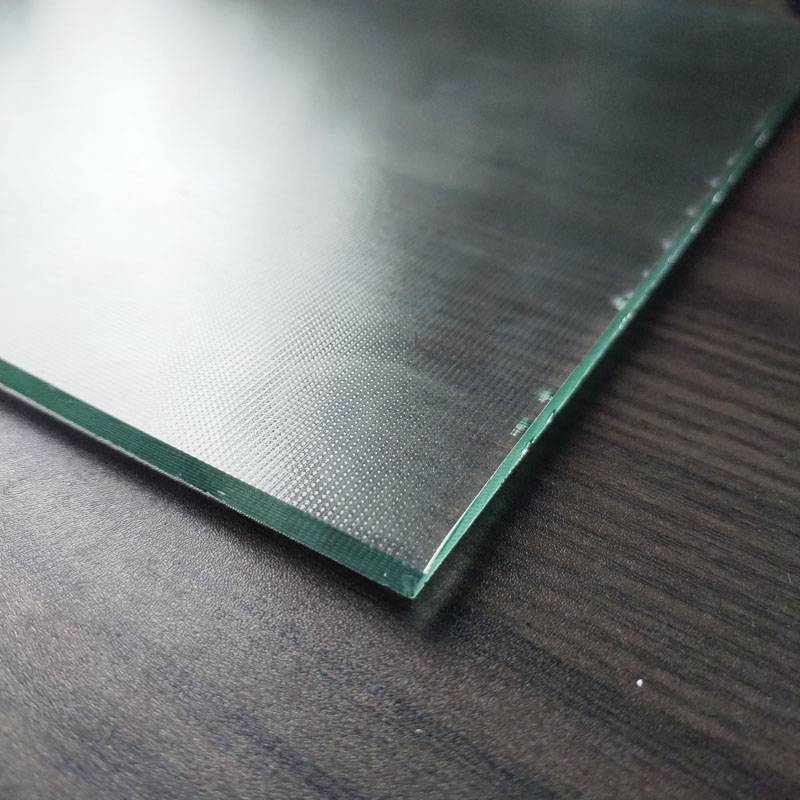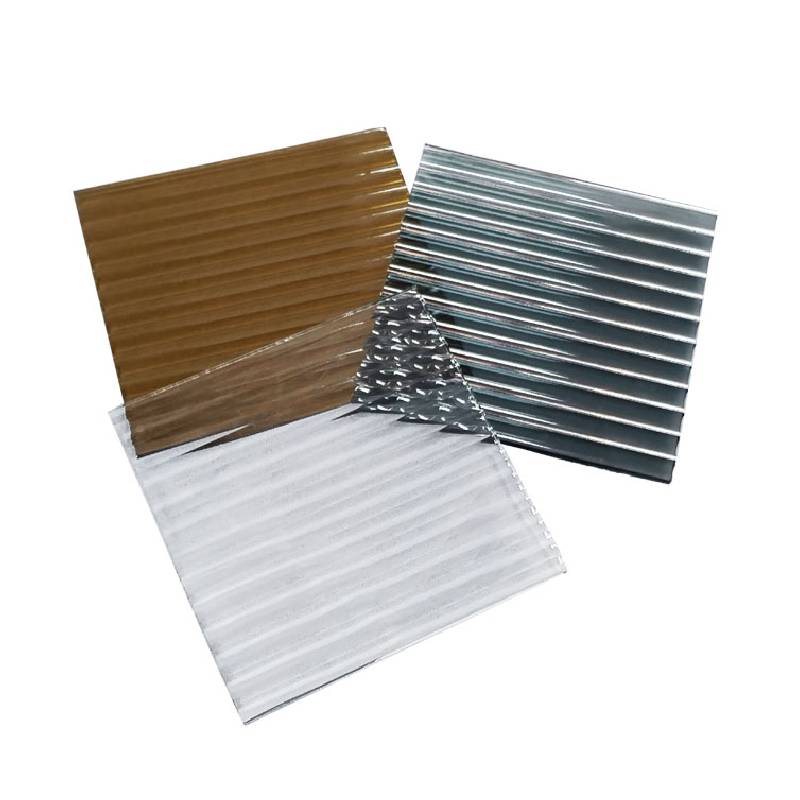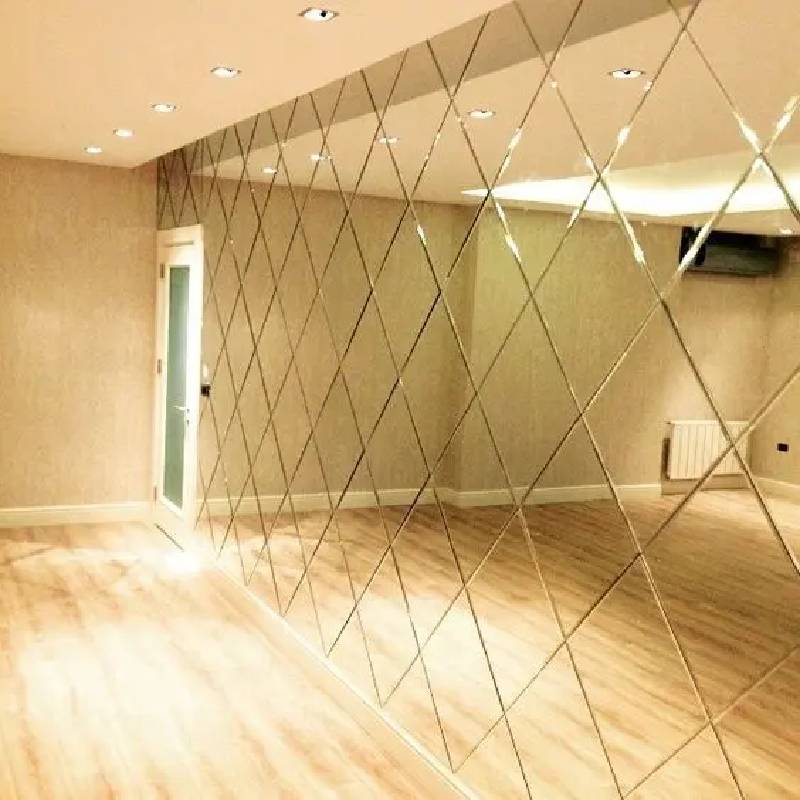Float glass means that the raw materials are melted at high temperature in the furnace. The molten glass continuously flows from the furnace and floats on the surface of the relatively dense tin liquid. Under the action of gravity and surface tension, the glass liquid spreads on the tin liquid surface. It is opened, flattened, and the upper and lower surfaces are formed to be smooth, hardened, and cooled before being led to the transition roller table. The rollers on the roller table rotate, pulling the glass ribbon out of the tin bath and into the annealing kiln. After annealing and cutting, flat glass products are obtained. The biggest feature of float glass is that its surface is hard, smooth, and flat. Especially when viewed from the side, the color is different from ordinary glass. It is white and the object is not distorted after reflection. In addition, due to the relatively good thickness uniformity, the transparency of its products is also relatively strong. It is precisely because of this transparency that it has a wider field of view. The broad field of view allows float glass to be used in many fields.
The production process of float glass is completed in a tin bath where protective gas (N2 and H2) is introduced. Molten glass continuously flows from the tank kiln and floats on the surface of the relatively dense tin liquid. Under the action of gravity and surface tension, the molten glass spreads and flattens on the tin liquid surface, forming an upper and lower surface that is smooth, hardened, and cooled. Then he was led to the transition roller table. The rollers on the roller table rotate, pulling the glass ribbon out of the tin bath and into the annealing kiln. After annealing and cutting, flat glass products are obtained. Compared with other forming methods, the advantages of float method are: it is suitable for high-efficiency manufacturing of high-quality flat glass, such as no corrugation, uniform thickness, smooth upper and lower surfaces, and parallel to each other; the scale of the production line is not limited by the forming method, and the energy per unit product Low consumption; high utilization rate of finished products; easy to scientifically manage and realize full-line mechanization and automation, high labor productivity; continuous operation cycle can last for several years, which is conducive to stable production; can provide suitable conditions for online production of some new varieties, such as Electric float reflective glass, spray film glass during annealing, cold end surface treatment, etc.
Float glass is widely used and is divided into tinted glass, float silver mirror, float white glass, etc. Among them, ultra-white float glass has a wide range of uses and broad market prospects. It is mainly used in the fields of high-end buildings, high-end glass processing and solar photovoltaic curtain walls, as well as high-end glass furniture, decorative glass, imitation crystal products, lighting glass, precision electronics industries, Special buildings, etc. Float glass has relatively good thickness uniformity and relatively strong transparency. Therefore, after tin surface treatment, it is relatively smooth. Under the action of smoothing, flame and polishing, it forms a surface that is relatively neat and flat. Glass with better strength and stronger optical properties. This kind of float glass has the characteristics of good transparency, brightness, purity, and bright indoor light. It is also the best choice for building doors, windows, and natural lighting materials. It is also one of the most widely used building materials. one.
The history of float glass can be traced back to the late 1950s. The British Pilkington Glass Company announced to the world that it had successfully developed the float forming process for flat glass. This was a revolution in the original grooved top forming process. However, the Western technology blockade at that time made China's float glass development and production have to take the path of self-reliance and independent innovation. In May 1971, the former Ministry of Building Materials Industry decided to conduct float process industrial trials in Luobo. Glass experts from all over the country gathered in Luobo, and more than a thousand employees of Luobo participated in the war. On September 23, 1971, under the guidance of department leaders and relevant experts, and with the full cooperation of fraternal units, the cadres and workers of Luoyang University worked together for more than three months and finally successfully built the first float. The glass production line produced my country's first float glass. From 1971 to 1981, CLFG implemented large-scale technical transformation on this line three times. The melting capacity of the production line reached 225 tons, the plate width exceeded 2 meters, and the overall yield reached 76.96%. At the end of 1978, In early 1979, thinner 4 mm glass was stably produced. The technology and equipment of "Luoyang Float Glass Process" were also improved day by day, and the technical level was continuously improved.
Fördelarna med floatglas återspeglas främst i följande aspekter: för det första har det bra planhet och inga vattenvågor; för det andra har den valda malmkvartssanden bra råvaror; för det tredje är glaset som produceras rent och har god transparens; slutligen strukturen Kompakt, tung, smidig vid beröring, tyngre än en platt platta per kvadratmeter av samma tjocklek, lätt att skära och inte lätt att bryta. Dessa fördelar gör att floatglas används i stor utsträckning inom konstruktion, bilar, dekoration, möbler, informationsindustriteknik och andra industrier.
- Tjocklek på floatglas
Vanlig tjocklek 3 mm, 4 mm, 5,5 mm, 6 mm, 8 mm, 10 mm, 12 mm
Ultratunn 1,2 mm, 1,3 mm, 1,5 mm, 1,8 mm, 2 mm, 2,3 mm, 2,5 mm
Extra tjock 15mm, 19mm
Storlek 1220*1830mm, 915*2440mm, 915*1220mm, 1524*3300mm, 2140*3300mm, 2140*3660mm, 2250*3300mm, 2440*3660mm
 afrikanska
afrikanska  albanska
albanska  amhariska
amhariska  arabiska
arabiska  armeniska
armeniska  azerbajdzjanska
azerbajdzjanska  baskiska
baskiska  vitryska
vitryska  bengaliska
bengaliska  bosniska
bosniska  bulgariska
bulgariska  katalanska
katalanska  Cebuano
Cebuano  korsikanska
korsikanska  Kroatisk
Kroatisk  tjeckiska
tjeckiska  danska
danska  holländska
holländska  engelsk
engelsk  esperanto
esperanto  estniska
estniska  finska
finska  franska
franska  frisiska
frisiska  galiciska
galiciska  georgiska
georgiska  tysk
tysk  grekisk
grekisk  Gujarati
Gujarati  haitisk kreol
haitisk kreol  hausa
hausa  hawaiian
hawaiian  hebreiska
hebreiska  Nej
Nej  Miao
Miao  ungerska
ungerska  isländska
isländska  igbo
igbo  indonesiska
indonesiska  irländsk
irländsk  italienska
italienska  japanska
japanska  javanesiska
javanesiska  Kannada
Kannada  kazakiska
kazakiska  Khmer
Khmer  rwandiska
rwandiska  koreanska
koreanska  kurdiska
kurdiska  kirgiziska
kirgiziska  TB
TB  latin
latin  lettiska
lettiska  litauiska
litauiska  Luxemburgiska
Luxemburgiska  makedonska
makedonska  Malgashi
Malgashi  malajiska
malajiska  Malayalam
Malayalam  maltesiska
maltesiska  Maori
Maori  Marathi
Marathi  mongoliska
mongoliska  Myanmar
Myanmar  nepalesiska
nepalesiska  norska
norska  norska
norska  occitanska
occitanska  Pashto
Pashto  persiska
persiska  putsa
putsa  portugisiska
portugisiska  Punjabi
Punjabi  rumänska
rumänska  ryska
ryska  Samoan
Samoan  skotsk gaeliska
skotsk gaeliska  serbiska
serbiska  engelsk
engelsk  Shona
Shona  Sindhi
Sindhi  singalesiska
singalesiska  slovakiska
slovakiska  slovenska
slovenska  somaliska
somaliska  spanska
spanska  Sundanesiska
Sundanesiska  Swahili
Swahili  svenska
svenska  Tagalog
Tagalog  tadzjikiska
tadzjikiska  Tamil
Tamil  tatariska
tatariska  Telugu
Telugu  Thai
Thai  turkiska
turkiska  turkmeniska
turkmeniska  ukrainska
ukrainska  Urdu
Urdu  Uigur
Uigur  uzbekiska
uzbekiska  vietnamesiska
vietnamesiska  walesiska
walesiska  Hjälp
Hjälp  jiddisch
jiddisch  Yoruba
Yoruba  Zulu
Zulu 

